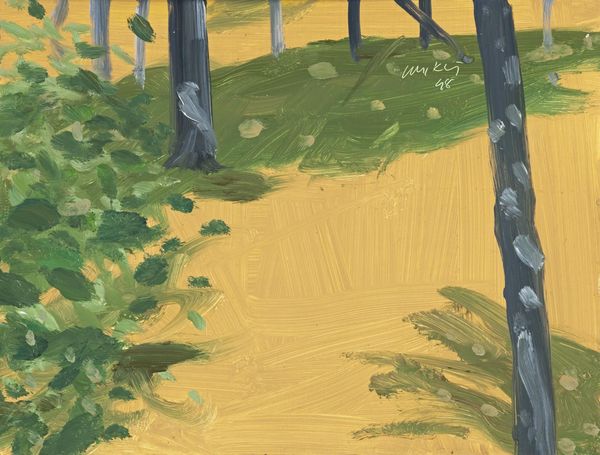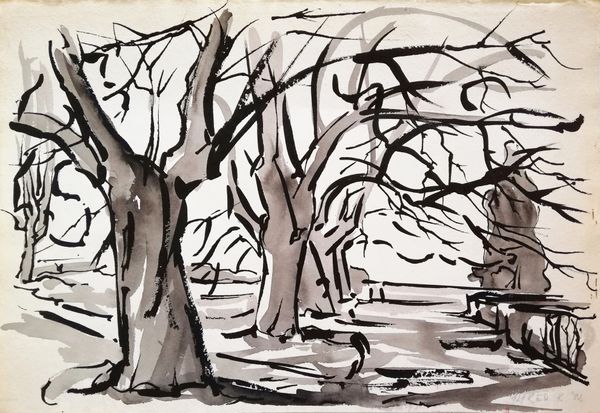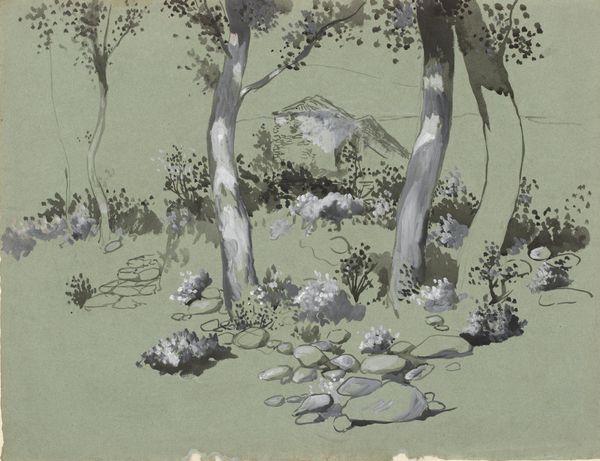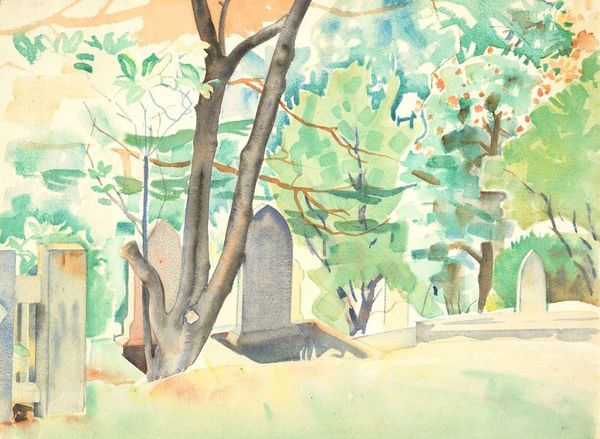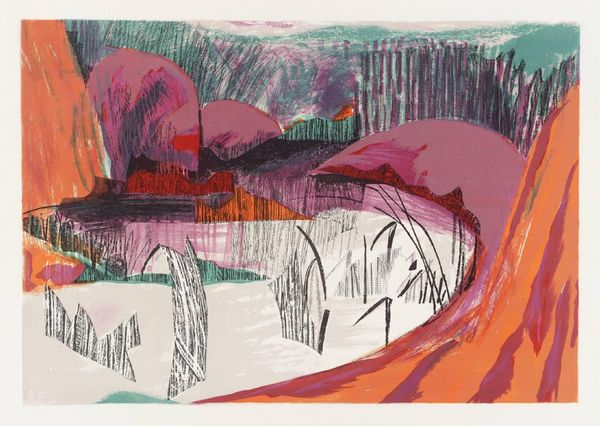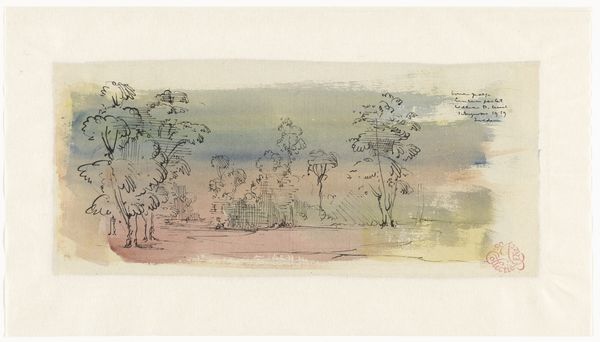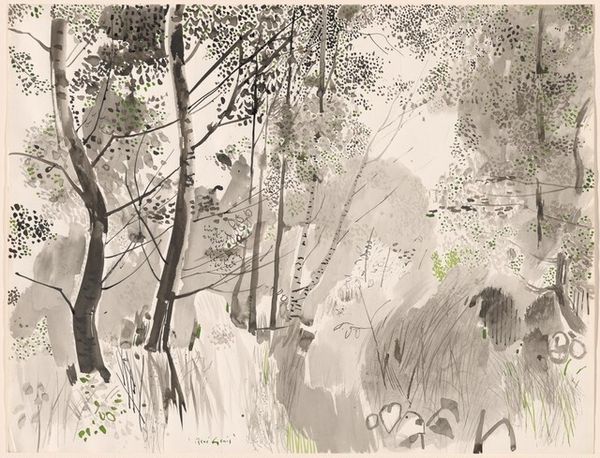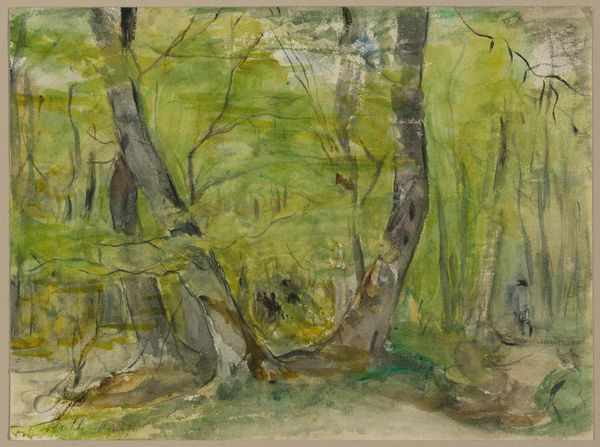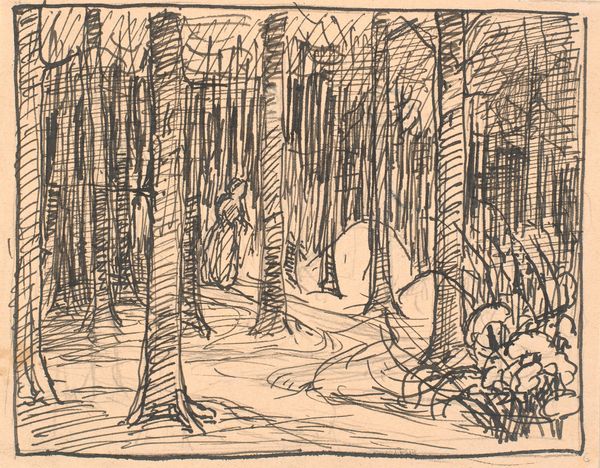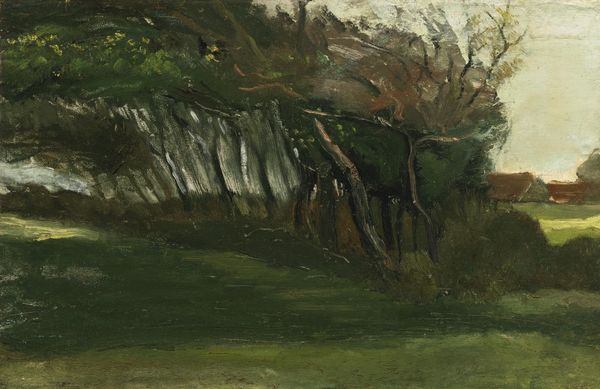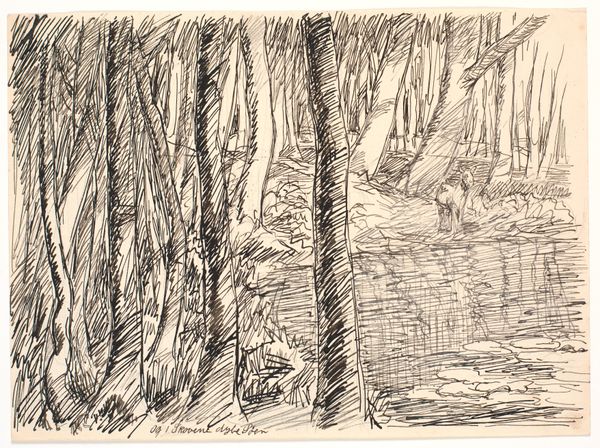
Copyright: Public Domain: Artvee
Curator: I’m struck by the muted tones; there’s almost a quietness to the scene. What do you make of it? Editor: We're looking at "Landscape of the Autumn Park" by Mikuláš Galanda, likely created between 1925 and 1926. It's a watercolor piece, predominantly using shades of green and brown. I immediately think about the economic constraints Galanda faced, informing his material choices here. Curator: Absolutely. The deliberate choice of watercolor emphasizes process—a kind of efficiency, yet the artist isn't sacrificing form. The lightness of the medium creates an interesting juxtaposition against the scene's implied density of trees. Considering the era, the work hints at an accessibility of materials. Editor: Indeed. Thinking more about its historical context, one could argue that the scene suggests an engagement with nature amidst social upheaval and changing political landscapes. I'm thinking about the increasing urbanization versus the inherent longing for the tranquility of the natural world. Curator: It really underscores the relationship between Galanda’s choices as an artist and larger socioeconomic currents. Do you notice any tension between abstraction and representation? Galanda walks a stylistic line. Editor: Definitely. This piece can be read as a gentle commentary on the human desire for connection, particularly with places and resources deemed increasingly unattainable by certain demographics due to societal pressures. Curator: The accessibility of Galanda's approach is striking, from the materials used to his blurring the lines between impressionism and abstraction. It allows us to appreciate art as a fluid negotiation with its time, which I really love. Editor: The subdued colors are indeed captivating and encourage contemplation, underscoring the artist's awareness of his environmental footprint, both socially and artistically, encouraging discourse. I agree that thinking of his intentions alongside his social climate gives Galanda's piece considerable modern relevance.
Comments
No comments
Be the first to comment and join the conversation on the ultimate creative platform.
